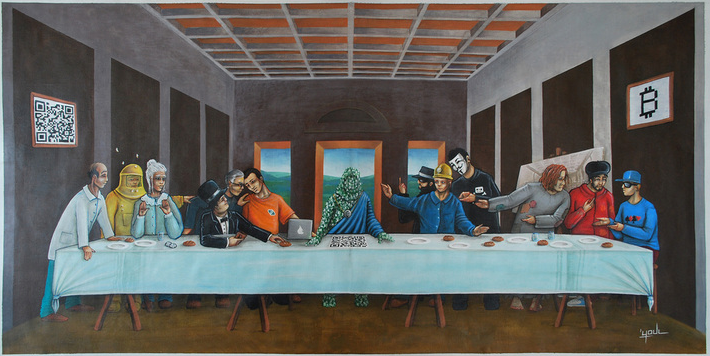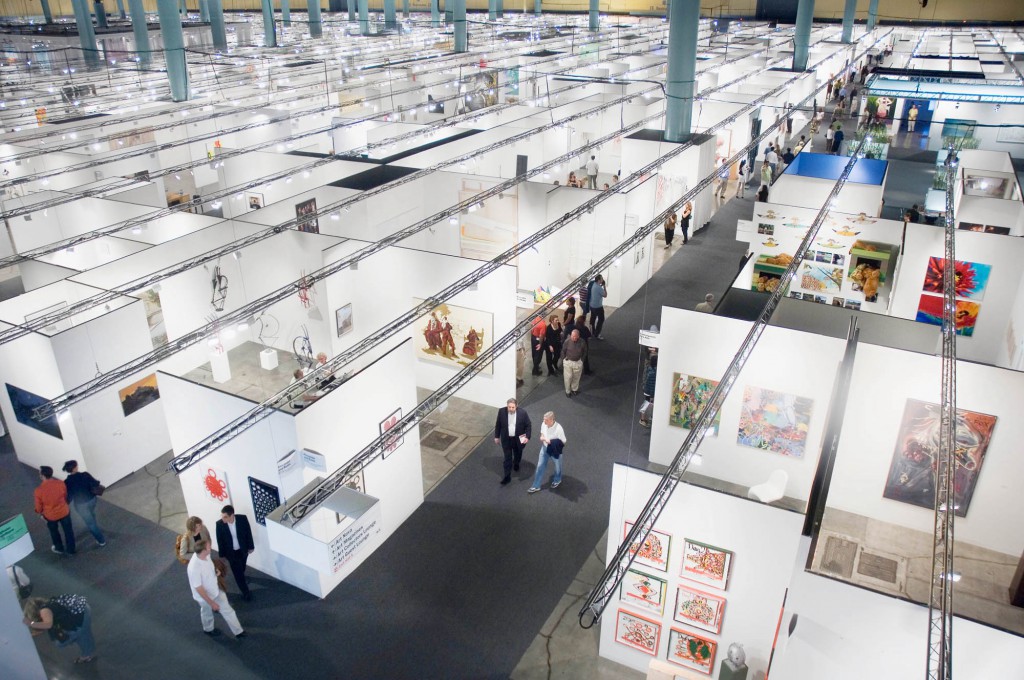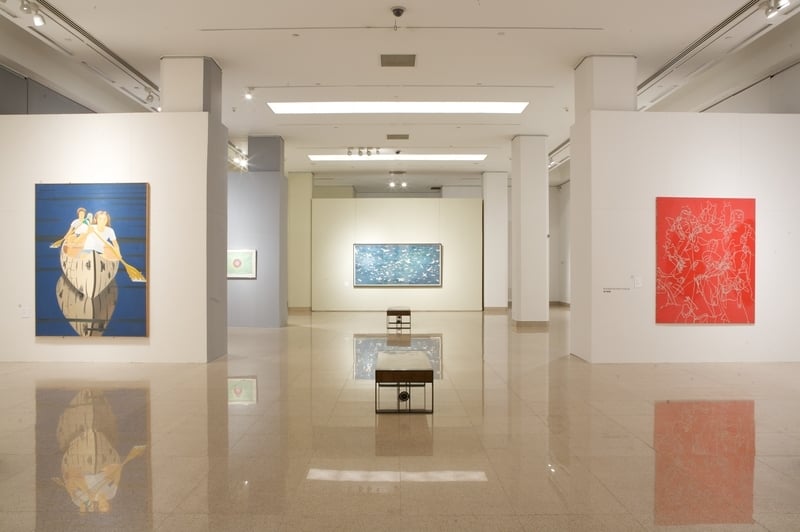Art Fairs
10 Tips For Newly-Minted Tech Millionaire Art Collectors
The dos and don'ts of art collecting, Silicon Valley-style.

The dos and don'ts of art collecting, Silicon Valley-style.

Cait Munro


Youl, The Last (Bitcoin) Supper.
Photo: via CoinDesk.
Are you a newly-minted tech millionaire with cash to burn and an urge to start an art collection?
If so, you’re the unicorn that every art dealer in America is hoping to take for a ride.
Why else would mega-galleries like Gagosian, Pace, and David Zwirner be making it out to the Seattle Art Fair this summer? They’re looking to hobnob with you, precious unicorn, and if you want to hold your own everywhere from the booths to the back rooms, here’s what you need to know.
1. Do go to art fairs.
This is kind of a no-brainer, but it’s true: there’s really no better way to see industry vetted works of art all in one place. Think of it like an art collecting starter kit. Here are some tips for the fair-newbies.

A bird’s eye view of Art Basel.
Photo: Mitchell Zachs
2. Do think about getting an art advisor.
If you have an eye for what you like but don’t know much about the market, or you understand the numbers but don’t have the art historical background you feel you need to make a smart purchase—then consider getting in touch with an art advisor. They’ll be able to fill you in on what you need to know, whisk you around fairs, and make recommendations tailored to your tastes.
3. Don’t just focus on tech-themed art.
We get it. There’s a temptation to go with what you know, and when dealers find out that you’re in the tech sphere, they’ll likely try to push something on you in the hopes of an easy sell. But new media art, as cool as it is, isn’t the stablest of markets. And if you’re going to branch out into the art world, why not take it all the way and discover a newfound love for say, minimalist sculpture, black-and-white photography, or mixed-media works involving candle wax?
4. Don’t assume that everyone (or anyone) takes bitcoin.
The art world tends to be a little bit slower on the uptake when it comes to stuff like this. Best to stick to plastic or just cold, hard cash.

Still from Tom Sachs, A Space Program at SXSW.
5. Do keep your eyes open for art in unexpected places.
Going to art fairs and galleries is a sure bet, but plenty of dealers are also willing to meet you closer to home. For instance, this year’s South by Southwest Interactive Festival saw a number of art-related ventures and institutions, from LACMA’s panel on art and technology to the artist Tom Sachs in conversation with Artsy CEO Carter Cleveland, which coincided with the opening of Sachs’s “Boombox Retrospective” at the Contemporary Austin.
6. Do shop online.
Speaking of art sales startups, there’s a ton of them. If you don’t have the time or the energy to trek through a fair, check out Amazon art, Sotheby’s live auctions on Ebay, our very own artnet Auctions, or any of the other platforms that allow you to purchase artworks with the click of a mouse.
7. Do think about building a corporate collection.
Your art collection doesn’t have to begin and end with your private residence. Many companies, from the Fortune 500 to fledgling enterprises, are investing in art. It brightens up the office, gives back to the community, and there’s even a tax break involved. What’s not to like?

Inside the UBS art collection.
Photo: Whitney Museum of American Art.
8. Don’t expect the art world to operate like Wall Street.
Don’t expect to be able to track the value of an artwork like you can one of your tech stocks. Unlike on the stock exchange, where a share price is discernible on any given day, the value of an artwork can fluctuate wildly given a number of factors: recent museum or gallery shows, critical opinion, auction prices, buyer demand, and even an artist simply falling in or out of favor in the art world.
9. Don’t think obtaining the best works will be easy.
Are dealers thirsty for new blood? Certainly. But that doesn’t mean they’re going to let their guard down. There are myriad rituals that wouldn’t fly in any other sector but are taken for granted during the sales of artworks, especially if you’re working with blue-chip galleries or in-demand artists. For example: two for one art sales. (And no, that doesn’t mean two for the price of one, we’re afraid.)
10. Don’t be a flipper.
There’s nothing wrong with trying to turn a profit, but few people want to foster a reputation as an art flipper in the vein of Stefan Simchowitz, David Martinez, or Bert Kreuk. Buying art, often from emerging artists, and then selling it quickly and for a large profit margin may seem like a great business model, but once you start getting blacklisted from galleries, the jig is up.